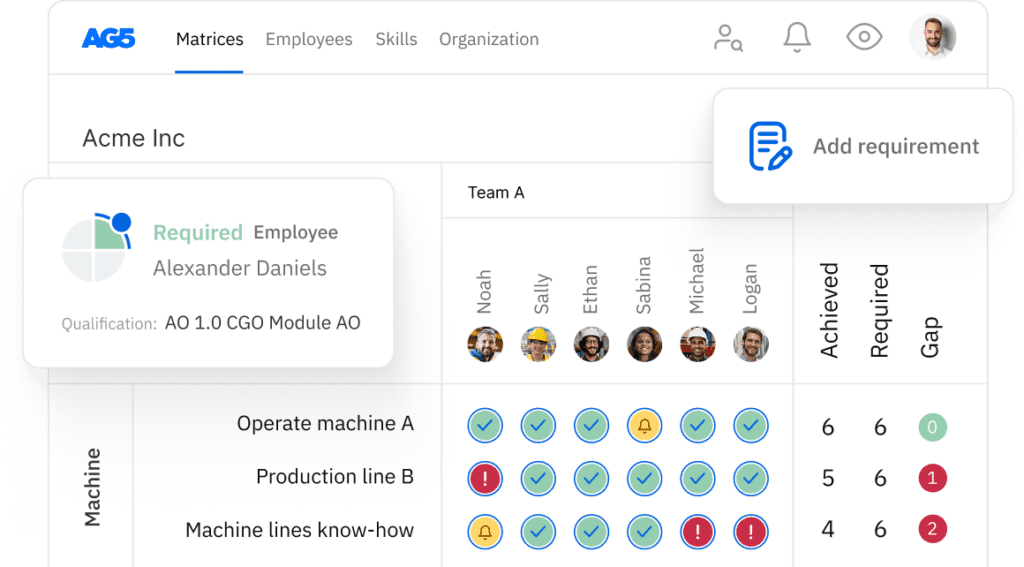

Syngenta
Martin Stumpe, Syngenta’s group lead, was looking for a database system to store all his company’s documents, certificates, and diplomas. He also wanted a system that allowed his co-workers access to this information.
Results achieved:
- More than 68 skills defined
- Time and cost savings
- Proof of training and no more expired certification
- Better insight into staff development opportunities
We’re using AG5 now because it allows us to centrally store all our documents, certificates, and diplomas, and our staff to access this information via an app.
What problems were you looking to solve?
Not so long ago, we had to throw away 480 kg of seed because green cabbage seeds and broccoli seeds look a lot alike. Somebody had mixed in a crate of the wrong seed. This would have meant that the farmer would have had a field of 80% cabbage and 20% broccoli. And this would have been unacceptable.
On further investigation, we discovered that a new employee without sufficient training had made this mistake. He hadn’t passed a test that would have allowed him to work with these seeds, but nonetheless there he was, working on his own. He shouldn’t have been assigned to this task because he couldn’t tell the difference between these two seeds yet. Our Excel-based skills matrices contained an error.
A 480 kg error that also cost a few hundred thousand euros. Enough to buy a small house.
What were you looking for in a new system?
We’d been recording our skills in Excel spreadsheets for quite a while, but merely placing an ‘x’ in a cell to show that someone had acquired a certain skill didn’t really cut the mustard.
Over six hundred people work here at Syngenta and they all have to undergo seed-recognition training to learn, for example, how to tell the difference between violet seeds and tomato seeds. We used to keep track of this in a logbook or spreadsheet stored on someone’s hard drive.
Was there anything that you were uncertain about before you started using AG5?
I’ve lost count of the number of software system implementations I’ve overseen in my lifetime – warehouse management systems, ERP, you name it! And there were always so many loose ends afterwards, which always took a lot of time and effort to put right. I have to admit I wasn’t sure implementing AG5 was going to work out. But it went incredibly smoothly. We hit the ground running and everyone could access their skills portfolio right away. So satisfying!
And have things gotten better since you started using AG5?
In the meantime, we’ve defined more than sixty-eight distinct skills, for example whether staff are qualified to operate certain types of equipment such as our packaging or seed‑coating machinery. We used to train our staff to use this machinery but didn’t record or keep track of this information properly. This eventually cost us dearly as in the case of the wrong seeds being mixed together.
Because they have direct access themselves, they can see which steps they need to take in their continued development or for a different role. We’ve defined which skills and proficiency levels needed to perform each task.
What’s more, we can demonstrate that all our staff have received training and are qualified and that their certification hasn’t expired! Nowadays, I can work proactively instead of reactively.
Suppose someone’s forklift truck certification had already expired without my knowing, I’d have to jump through hoops to get our driver recertified as quickly as possible; otherwise, he wouldn’t be able to work. This costs us far more time and money than knowing his certification is going to expire in four months’ time. Knowing this in advance, we can plan accordingly, saving both time and money.
Tired of managing skills in Excel?
Say goodbye to Excel matrices. Start using AG5’s plug and play skill matrix software.
Recognized by G2 for Excellence in Skills Management





